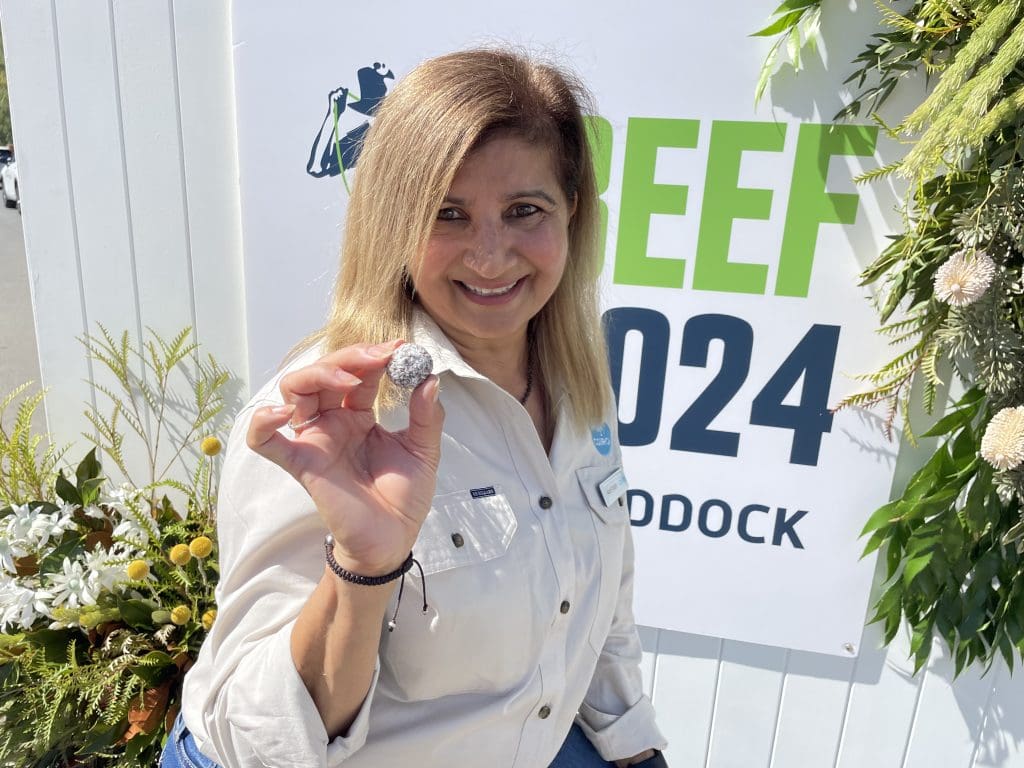
The beef protein powder product used to produce this protein ball snack was the result of more than three years of research by a team led by CSIRO’s Dr Aarti Tobin
EXCITING new and emerging value-added beef products were on show during Beef 2024 last week – mostly using lower-value cuts and trimmings to produce tasty snack-based items in tune with consumers’ changing eating habits.
Beef bacon was served at a number of breakfasts during the week, providing a surprisingly good alternative to cured and smoked pork belly.
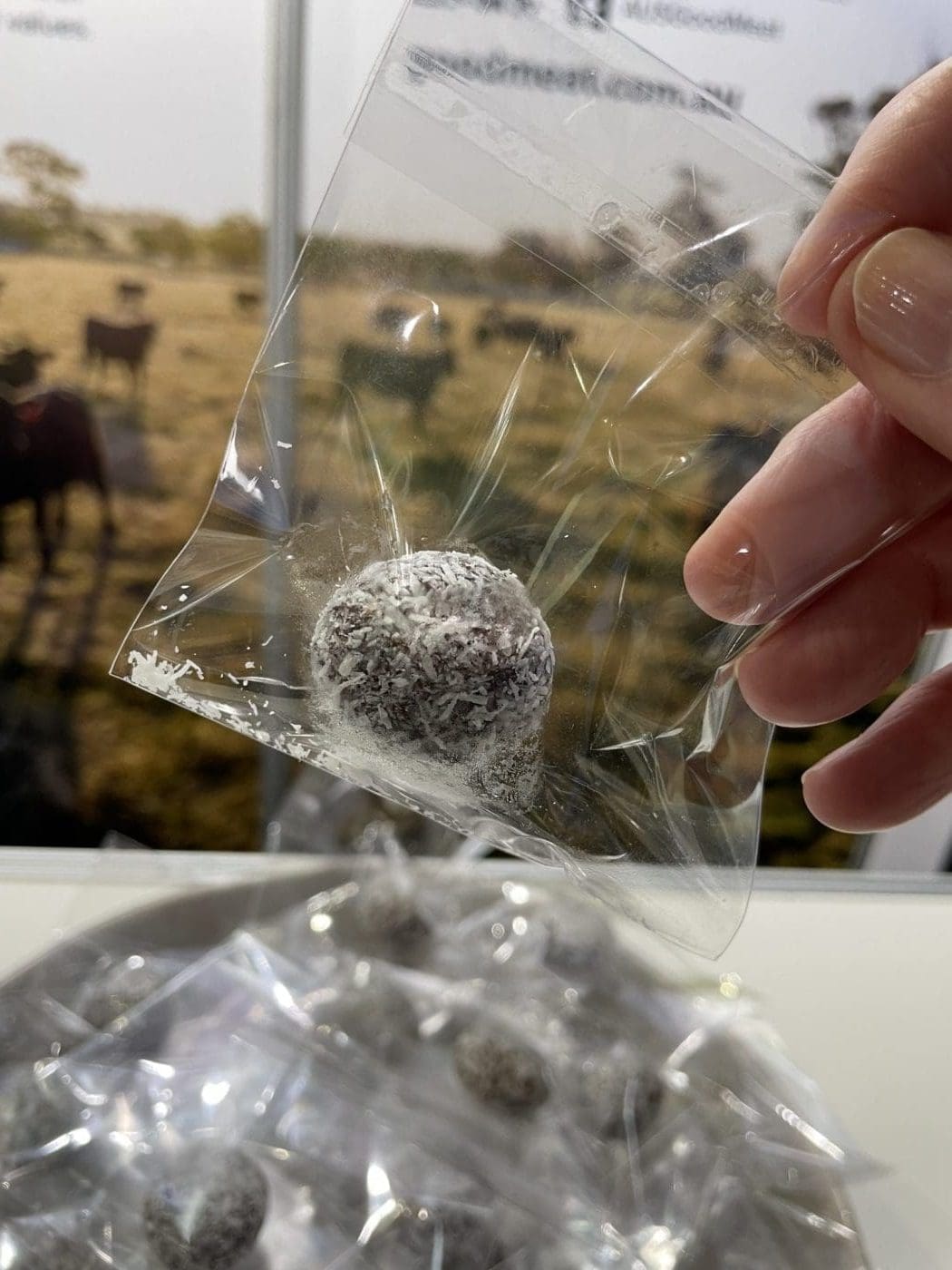
CSIRO hosted a VIP tasting for a new product concept, producing an appetising batch of protein ball snacks based on a high-protein powder made from beef. The product was the result of more than three years of research by a team led by CSIRO’s Dr Aarti Tobin, supported by Meat & Livestock Australia.
The nutrient-dense, shelf-stable powdered ingredient can add a protein punch to any food product and could represent an important value-add to Australia’s beef sector, while addressing growing global demands for high quality protein.
Diverse applications have been identified for the beef protein powder, such as enhancing the nutritional profile of protein powder for gym-goers or in aged care, fortifying protein balls, bars and beverages, or powering energy drinks and supplements.
The possibilities are endless, and suitable commercialisation pathways are currently being explored.
Beef convenience foods to tackle chicken’s value-added domain
Chicken has long been the go-to protein of choice in the value-added convenience foods space, but a Queensland-based business is making great headway in embedding beef products in the same segment.
Keppel Brands is in the final stages of building a brand new, expanded, export accredited processing facility near Yeppoon to cater for growing food service demand for its range of beef-based snacks and convenience foods.

Kelly Newton outlines Keppel Brands journey into value-added beef products last week
Kelly Newton, together with husband Mark Davie (Australian Beef Sustainability Framework chair) run their family’s second-generation food manufacturing and marketing business, established in 2013.
Keppel Brands has developed a range of value-added beef-based convenience and snack items now sold nationally.
Ms Newton opened her Beef 2024 seminar address with a statistical comparison, pointing out that just the chicken nugget market, alone, in southeast Asia, worth $16 billion annually, is worth almost as much as Australia’s entire beef export market ($17 billion).
“That there is our moonshot opportunity for Australian beef,” she said.
Two years ago Keppel Brands started a value-added beef brand called Cattlemen’s, which has since developed rapidly as a business, product and brand.
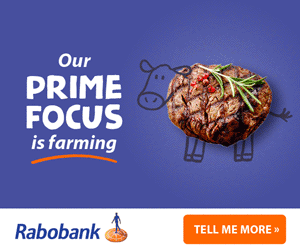 “Value-adding in food provides enhancements to products and additional value for the customer – either through convenience, taste or performance,” Ms Newton said.
“Value-adding in food provides enhancements to products and additional value for the customer – either through convenience, taste or performance,” Ms Newton said.
“In our case, crumbing and breading technology allows differentiation in the marketplace and additional cooking applications, so consumers can fry, oven-bake, and increasingly popular, air-fry.”
Keppel Brands’ range started with the basic Keppel Dog, a 100pc beef frank on a stick, familiar to many show-goers as the Dagwood Dog seen at fairs and shows, as well as battered savs, crumbed sausages – quintessential Aussie takeaway and convenience fare, she described as ‘fun food.’
More recently, other items have been added, described in greater detail below.
“We sit in this food service channel, selling to large distributors like PFD, Bidfood, Metcash and independent wholesalers. Our strength at the outlet level is really in the petrol station and convenience store hot box, and thousands of independent takeaways across the country,” Ms Newton said.
Originally the couple looked at convenience outlets like petrol stations and convenience stores, and asked, Where is the beef?
“Australia has a beef industry admired by the world. Beef is a superior protein containing all 12 essential vitamins and minerals for a healthy diet. But much of what we see in the hotboxes and the bain maries – which should be our core real estate – is crumbed chicken,” Ms Newton said.
“At the local pub it’s a chicken parmy or a chicken skewer – so we kept coming back to the question: Where is the beef?”
Two key hurdles
She suggested there were two key hurdles that beef needed to jump to gain greater penetration into the convenience food segment – consistency, and price.
“Convenience needs consistency, fast, and at-scale, with the same experience every time. Crumbed chicken is considered easier to work with, while beef is seen as more nuanced, or needing a little more skill to cook – at least beyond the mince pattie.
“Then we have cost. We’re all used to seeing $45 beef steaks on a restaurant or pub menu, and don’t bat an eyelid. In fact we expect it to be the most expensive item on the menu.”
The couple started to wonder whether it was possible to get a quality beef item to a price-point need for the convenience food segment.
Jumping these two hurdles was what drove Keppel Brands’ Cattlemens project.
“It’s about producing a product that raises the price for the farmer above the international beef trimmings price, creating more value in the beef supply chain,” Ms Newton said.
To achieve it, the business focussed on the Cap-off Inside cut (sometimes abbreviated to Insco – refer to AusMeat handbook of Australian Meat HAM code 2011 ), sitting between the shank and sirloin.
‘It’s a flavoursome cut, but being as real beef muscle, it’s a little tougher,” she said.
In Japan, the Insco cut is thinly-sliced (fine slicing is Japan’s enduring solution to preparing many tougher beef cuts), often dropped into hot broth dishes like shabu shabu.
Inscos represent a sizeable six percent of the beef carcase, but the real issue was addressing tenderness, Ms Newton said.
Keppel Brands’ solution is to wrap the primal in bamboo and slow-cook it for eight hours, delivering a product that grades closer in mouth-feel to fillet steak.
“Now we have flavour, and tenderness – we were starting to get excited,” she said.
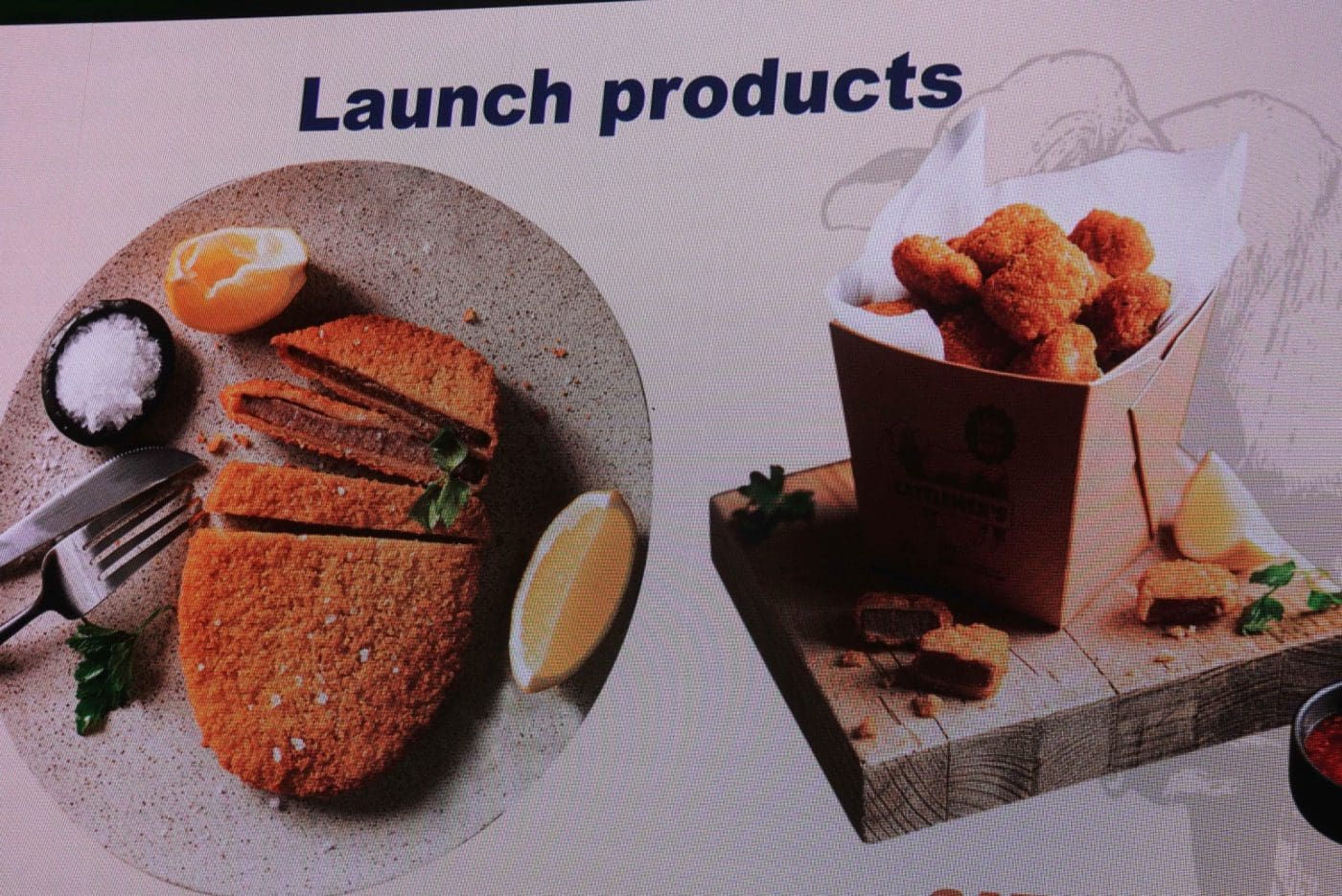
The Keppel Brands business invested in special cutting and portioning equipment to handle the cooked product, while minimising waste.
The next step was perfecting batter and crumb coatings for new beef applications, and most importantly for the customer, ease and speed of cooking.
“Our magic number was a simple three-minute cook from frozen. The meat inside is already fully-cooked, so there was no need to thaw.”
The result has been Cattlemens’ flagship product, the beef schnitty (pictured above), designed to tackle head on the ubiquitous chicken schnitty seen universally in pubs and clubs. Also released are battered or breadcrumbed beef pieces, a direct competitor with chicken nuggets (pictured); steak strips to compete with crumbed chicken tenders; and Japanese-inspired katsu beef schnitzel, along the lines of Japanese favourites, crunchy pork and chicken katsu.
All can be air-fried, roasted or oven fried. All three new products were launched at Beef 2024’s M’eat Street during last week’s Expo.
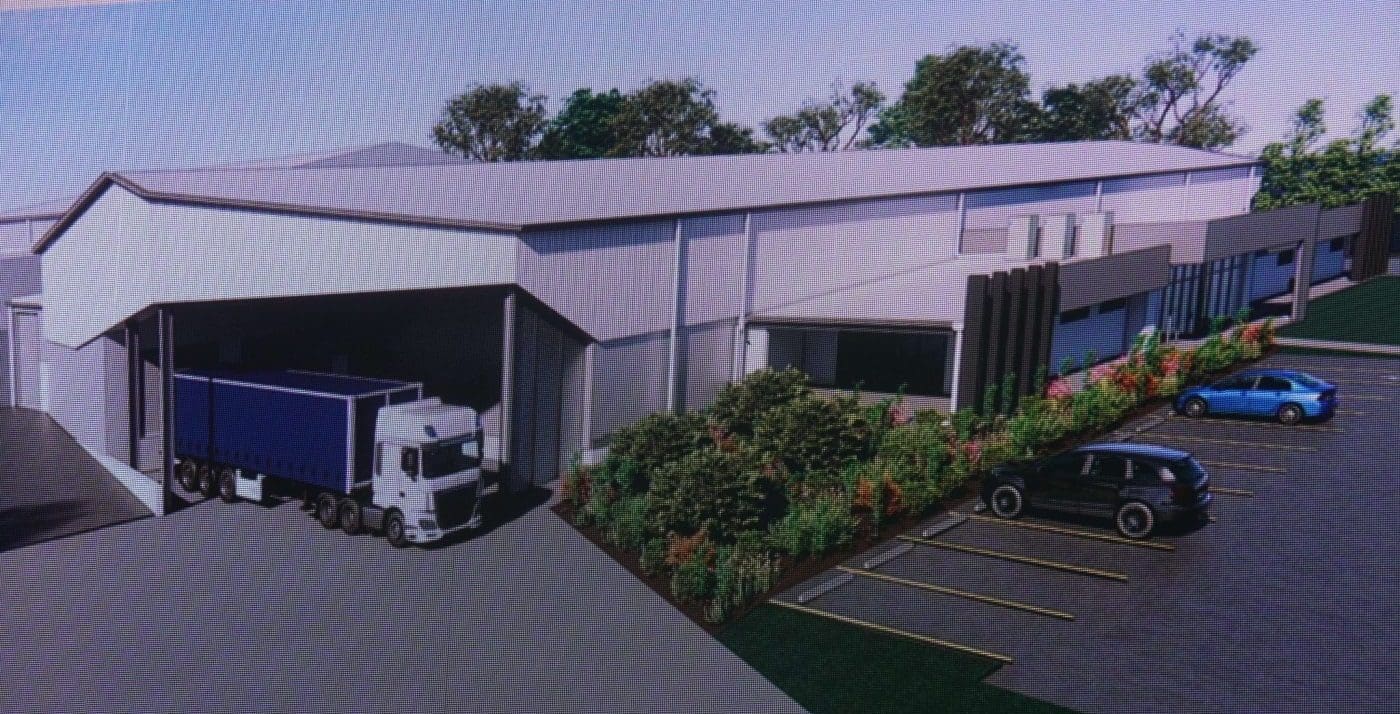
The business’s new 3200sq m manufacturing facility due for completion next year will be fully export-accredited, and will include state-of-the-art refrigeration, packaging and processing equipment for cooking, portioning, breading and coating value-added products.
“The new facility will allow us to scale, add to our current team of 45 with long-term regional employment, and importantly, provide a hub for regional innovation in food making,” Ms Newton said.
“We’re excited for the future, and for doing our small bit to help positively sell more Australian beef,” she said.
